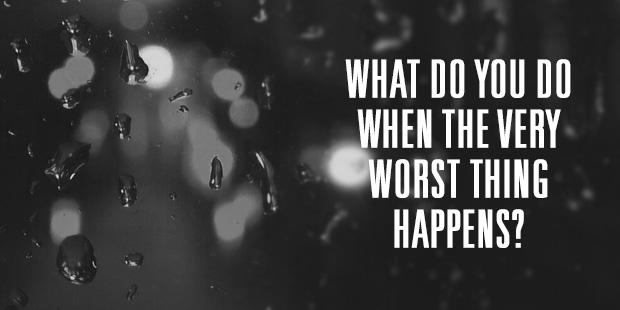
What Will You Do When the Very Worst Thing Happens?
In spite of all the hype about the 2013 George Clooney/Sandra Bullock movie Gravity, my expectations were rather low. I was wrong. Gravity is one of the best movies of the year, maybe of the decade. The cinematography is out of this world (literally) and the suspense is incredible. I know some of the science doesn’t work, but it doesn’t matter; it is a simple story told in a masterful way.
(Spoiler Alert: If you haven’t seen Gravity see it before reading further because I’m going to ruin it for you.)
The story of Gravity revolves around the theme, “What do you do when the very worst thing possible happens?” Just when the characters think it can’t get any worse it does. Its a feeling many leaders experience every Monday morning, so here are five powerful lessons leaders in crisis mode can glean from the movie:
>>Things are seldom as bad as you think
When the Space Shuttle is destroyed and Sandra Bullock goes tumbling into space my first thought is, “This is going to be a really short movie, no way she survives.” I can’t imagine a worse disaster. George Clooney realizes, however, that while this is bad things could be worse. They have a little oxygen, a jet pack and a clear path to the International Space Station. Things are bad but not hopeless.
While the disasters we face as leaders are seldom as catastrophic as being stranded in space without a ride back to earth, they can certainly feel that way. A staff member is caught in an affair, the bookkeeper embezzles the payroll, or that crack in the sidewalk turns out to be major structural damage. The team can feel like the walls are caving in, but a leader’s job is to assess the situation, calm the team and begin immediately to plan the next steps.
>>There is almost always a way out
When Bullock’s oxygen runs out Clooney tells her there’s more air still in her suit, just take smaller breaths. (“Sips not gulps, wine not beer”). When the Soyuz escape pod is unusable on the ISS he points her to the Chinese space station. At each dead-end Clooney finds an alternate route.
Leaders can’t give in to dead ends. The leader is the advance scout looking for the next option, the next step toward safety and success. The reality is even in the most hopeless circumstances there is almost always a way over, through or around the obstacle; the leader’s job is to find that route.
>>Friendship is crucial
At its core Gravity is a buddy movie. The disaster is really just a backdrop for the growing trust and friendship between Clooney and Bullock. Even after he’s gone Bullock continues to draw hope from their relationship.
Success or failure in the face of disaster often hinges on the relationship between the leader and her team. Do they trust her? Does she trust them? Does the team know the leader is genuinely concerned about their welfare, or is she simply using them to reach her pre-determined goal? Without friendship and trust disaster will quickly destroy a team.
>>Sometimes you have to let go
One of the most poignant moments of the film is Clooney disconnecting the tether to Bullock. He knows that she cannot survive unless she lets him go. (The physics are completely wrong, but the point is valid) If she continues to cling to Clooney they both will die, if she will let him go she can survive. He makes the only choice that makes sense.
Letting go is one of the hardest things to do in a crisis. Our natural instinct is to cling to what we know, to the familiar, to what seems safe. But survival often requires release. In a crisis it is important not to make snap judgements, but the only path to organizational health may be to let someone go.
>>It seldom turns out the way you think it will (but that’s ok)
Sandra Bullock’s character never imagines her mission will end alone in a Chinese escape pod near an island in the middle of nowhere. Everything she thinks success looks like is turned upside down. In the end she survives, she realizes what is important and she reaches out to God. (My interpretation of her prayer) She would never choose this path, but she wouldn’t trade it either.
It is in the disasters of life that individuals and organizations are shaped. We learn what is important, we learn what we are made of and we learn we can survive. David was shaped in Cave of Adullum, Moses was shaped on the back side of the desert, Peter was shaped in High Priest’s courtyard. We are refined by the things we most want to avoid.
As leaders we have to be prepared to lead our team through crisis, because crisis will come. The question is how will we survive?

Tags: Geoff Surratt, Leadership












